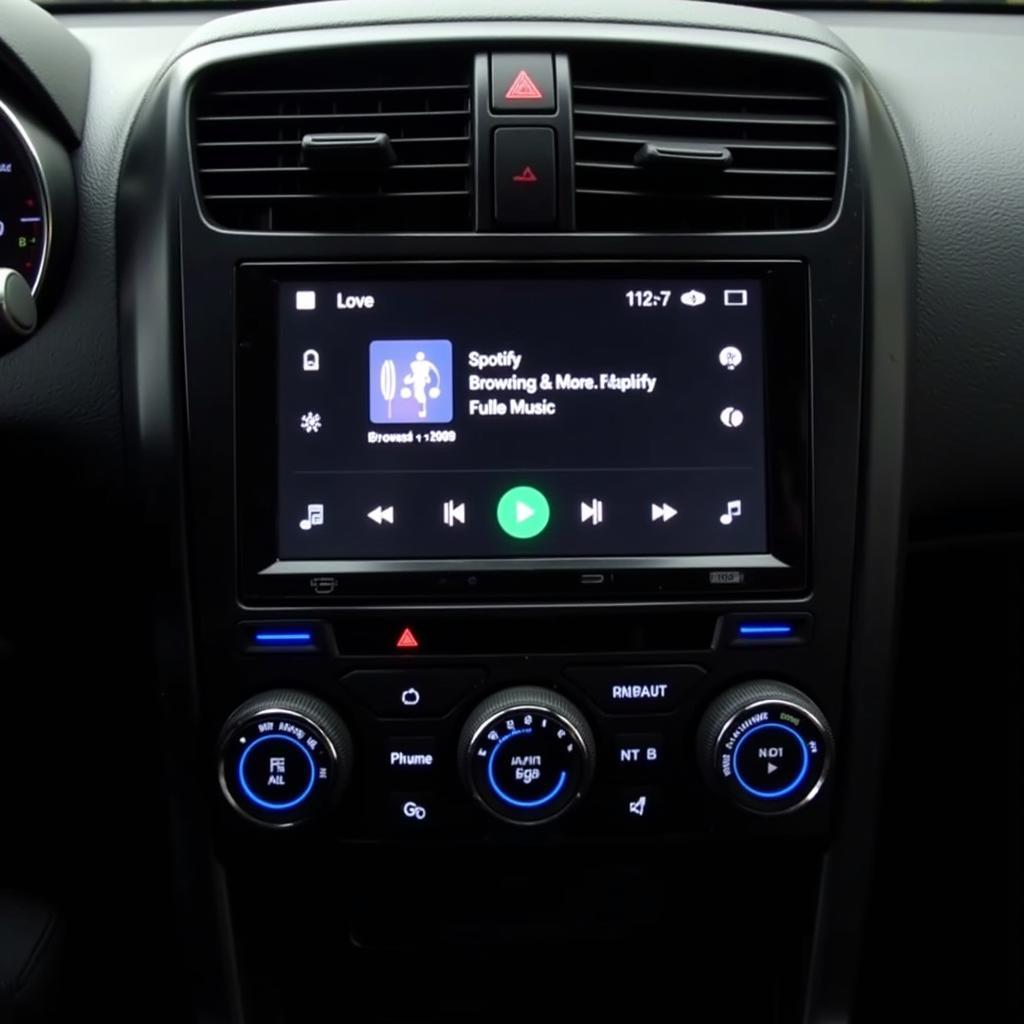If your anti-lock brakes warning light stays on, you should take action immediately. This light, often abbreviated as ABS, indicates a potential issue with your vehicle’s anti-lock braking system. Ignoring it could compromise your safety, especially in emergency braking situations. This article will delve into the common causes of a persistent ABS warning light, how to diagnose the problem, and potential solutions.
Modern vehicles rely heavily on complex electronic systems, and the anti-lock braking system is no exception. It’s designed to prevent wheel lockup during hard braking, allowing you to maintain steering control and avoid skidding. When the ABS light illuminates, it signals a malfunction within this crucial safety system. A faulty ABS system can lead to increased stopping distances, loss of control on slippery surfaces, and potential damage to other braking components.
Understanding the ABS Warning Light
The ABS warning light is usually amber or yellow and shaped like a circle with the letters “ABS” inside. When you start your car, the light should briefly illuminate as part of the system’s self-test. If the light stays on, or comes on while driving, it indicates a problem.
Sometimes, the issue is temporary, such as a momentary sensor glitch. Restarting your car might resolve the problem. However, if the anti-lock brakes warning light stays on, you should consider it a serious issue requiring further investigation.
Common Causes of a Persistent ABS Warning Light
Several factors can trigger the ABS warning light. Identifying the root cause requires a systematic approach. Here are some of the most common culprits:
- Low Brake Fluid: Low brake fluid can disrupt the hydraulic pressure needed for the ABS to function correctly. This could be due to a leak in the braking system.
- Faulty ABS Wheel Speed Sensors: These sensors monitor the speed of each wheel and are crucial for the ABS to operate. A damaged or dirty sensor can send incorrect signals, triggering the warning light.
- Damaged ABS Control Module: The ABS control module is the brain of the system. A malfunctioning module can lead to a variety of issues, including a persistent warning light.
- Blown ABS Fuse: A blown fuse can interrupt power to the ABS system, causing the light to illuminate.
- Wiring Problems: Damaged or corroded wiring can disrupt communication within the ABS system.
Diagnosing the Problem: Steps You Can Take
While some diagnostic steps might require professional tools, there are a few things you can check yourself:
-
Check Brake Fluid Level: Inspect the brake fluid reservoir. If the level is low, top it off with the correct type of fluid. If the fluid level drops rapidly, there’s likely a leak that needs professional attention. You might need a jump if your battery is drained in the process, so consider learning more about how Autozone handles dead batteries.
-
Visually Inspect ABS Wiring and Sensors: Look for any signs of damage, corrosion, or loose connections on the ABS wiring and wheel speed sensors. This is often easier said than done, but worth checking if you are comfortable under the hood.
-
Check the ABS Fuse: Locate the ABS fuse in your vehicle’s fuse box and check if it’s blown. If so, replace it with a new fuse of the correct amperage.
 Checking ABS Fuse in Fuse Box
Checking ABS Fuse in Fuse Box
If you’ve exhausted these basic checks and the anti-lock brakes warning light stays on, you should seek professional assistance. A qualified technician can use diagnostic tools to pinpoint the exact cause of the problem.
“Regular brake system maintenance is crucial for safety,” says John Miller, Certified Automotive Technician at Miller’s Auto Repair. “Don’t ignore warning lights, especially the ABS light. It’s a sign that a critical safety system needs attention.”
What to Do When the ABS Light Comes On While Driving
If the ABS light comes on while you’re driving, it’s essential to remain calm. Pull over to a safe location when possible. Check your brake fluid level and inspect the tires for any visible damage. If you feel any unusual braking behavior, such as pulsating or spongy brakes, exercise extra caution. Avoid hard braking if possible, and drive slowly to a repair shop. Your car might unexpectedly die, especially if the battery is drained. Knowing how to handle a situation where your car battery is charged but the car won’t start can be helpful.
Remote Diagnostics and Software Solutions
In some cases, the issue causing the ABS light might be software-related. Advanced remote diagnostic tools allow technicians to access your vehicle’s computer system remotely, identify software glitches, and even upload software updates to fix the problem. This can often save time and money compared to traditional diagnostic methods.
Conclusion: Don’t Ignore the ABS Warning
When your anti-lock brakes warning light stays on, you should address the issue promptly. Ignoring it can jeopardize your safety and lead to more extensive repairs down the line. By understanding the common causes, performing basic checks, and seeking professional help when necessary, you can ensure your ABS system functions correctly and keep you safe on the road. If your car battery is drained, knowing whether it will recharge after being drained can provide some peace of mind. Similarly, if your car just died and won’t start, understanding the potential causes can help you troubleshoot the problem. If your battery isn’t dead but the car won’t start, there could be other underlying issues.
Is your car battery charged, but your car still won’t start? Check out our guide on what to do when your car battery is charged but the car not starting.


